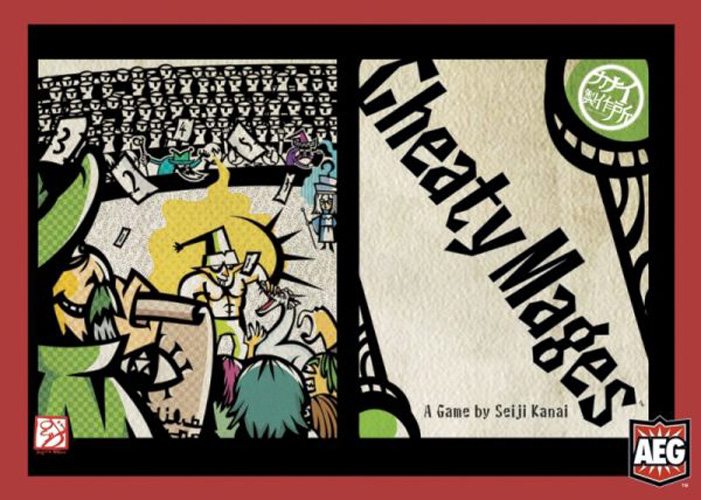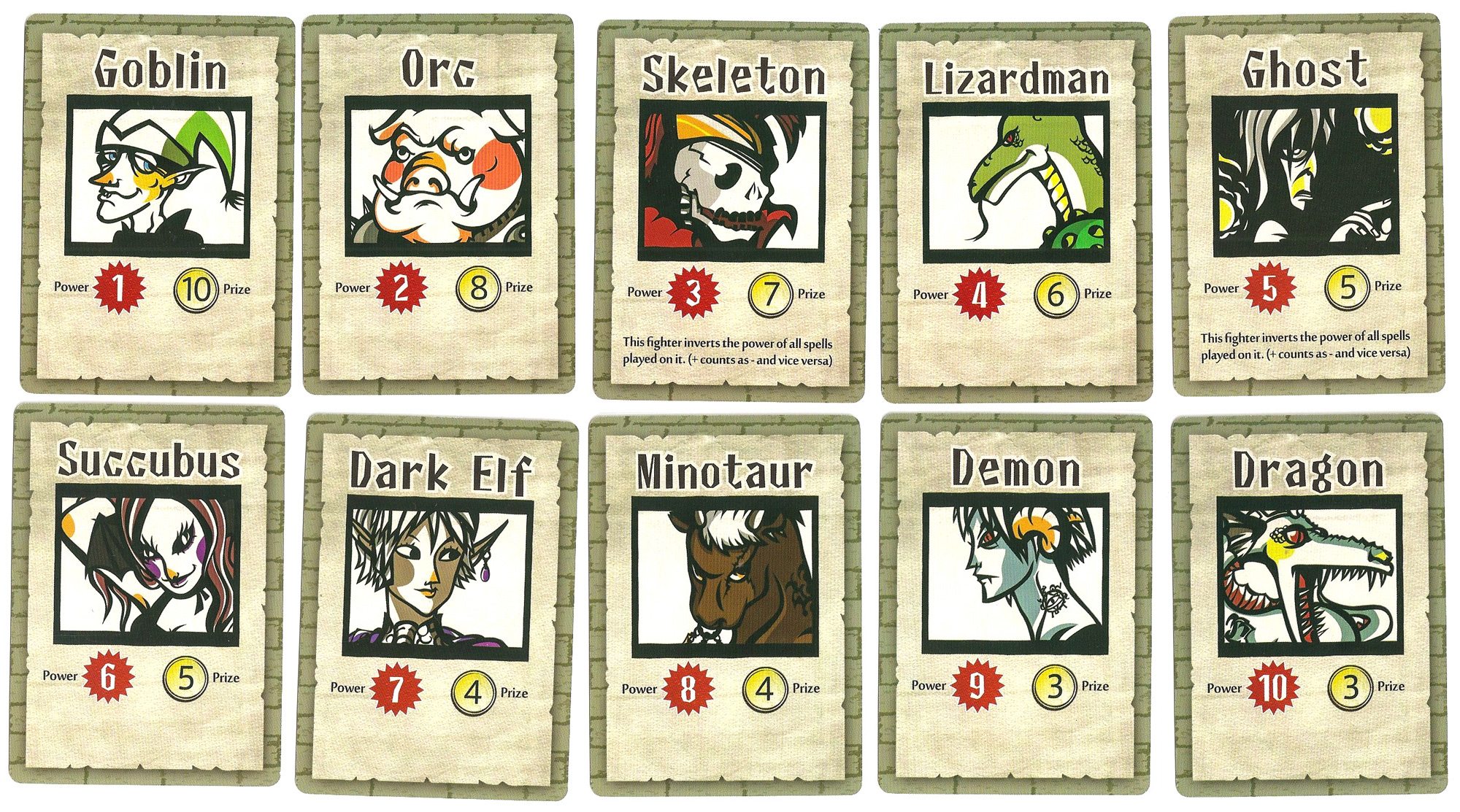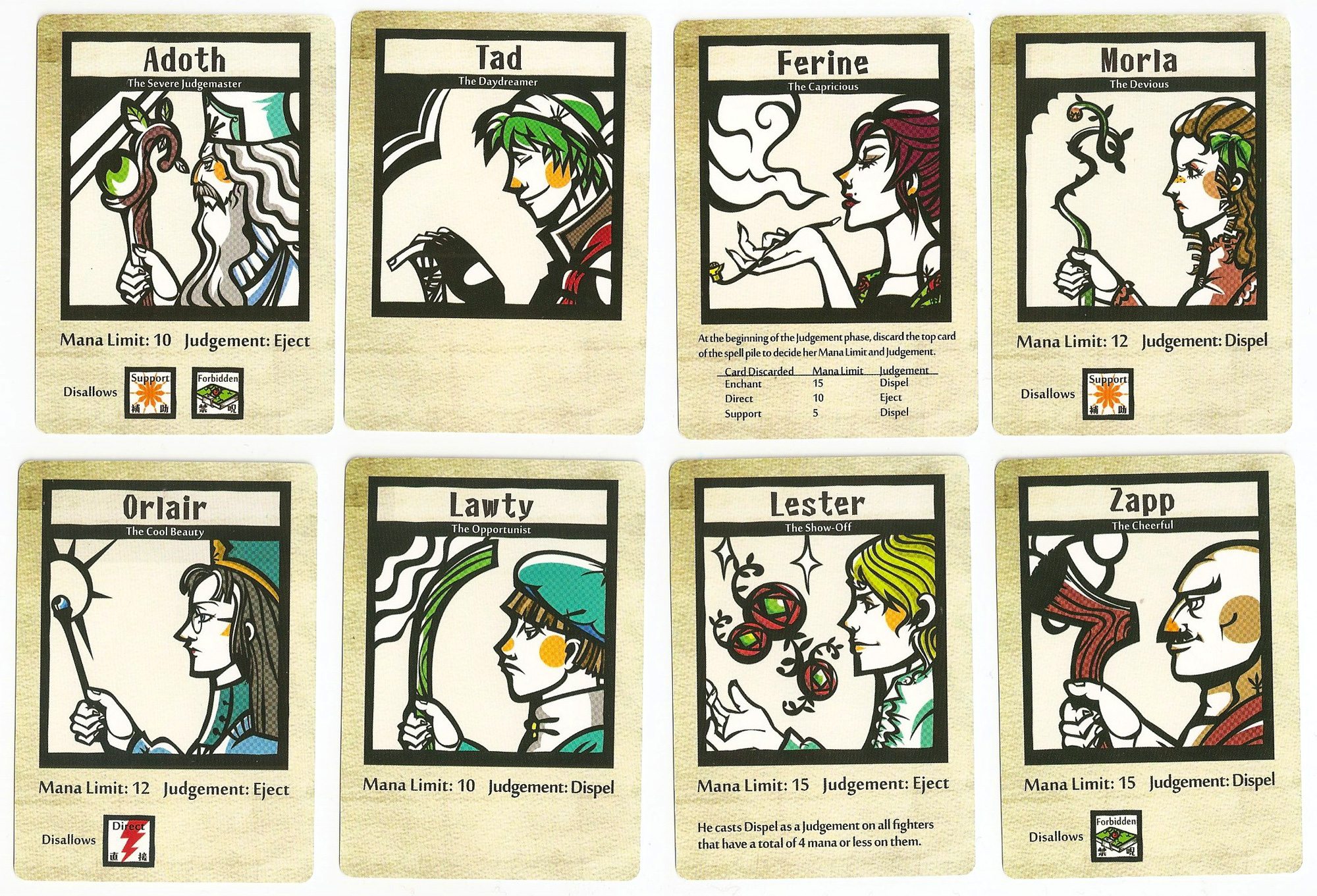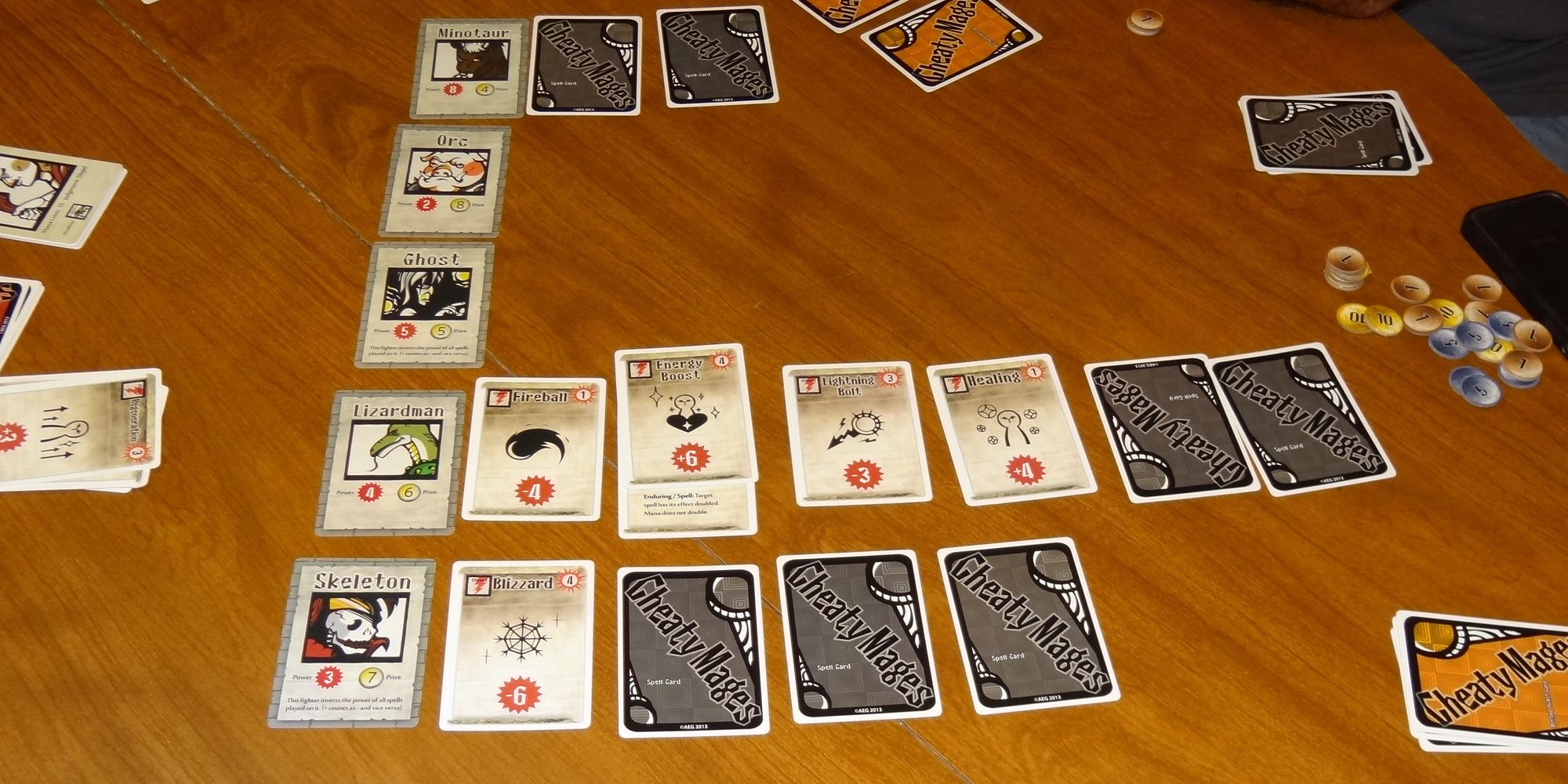 From Seiji Kanai, the designer of Love Letter, comes another small game that packs a big punch. Cheaty Mages, released this fall by AEG, is about arena battles between mythical creatures: dragons and minotaurs, ghosts and goblins. But you don’t play these fighters; instead, you play the mages who bet on the fights … and cast spells as insurance against your wagers. But don’t get overeager—if the judges notice your interference, they’ll dispel all of your spells, or even eject the fighter entirely. Mages, place your bets!
From Seiji Kanai, the designer of Love Letter, comes another small game that packs a big punch. Cheaty Mages, released this fall by AEG, is about arena battles between mythical creatures: dragons and minotaurs, ghosts and goblins. But you don’t play these fighters; instead, you play the mages who bet on the fights … and cast spells as insurance against your wagers. But don’t get overeager—if the judges notice your interference, they’ll dispel all of your spells, or even eject the fighter entirely. Mages, place your bets!
Overview
Cheaty Mages is for 3 to 6 players, ages 12 and up, and takes about 30 minutes to play. It retails for $19.99, and is available from your local game store and online retailers like Amazon.
Components
- 72 Spell cards
- 10 Fighter cards
- 8 Judge cards
- 30 Betting cards
- 30 coin chips (in denominations of 1, 5 and 10)
The cards are a nice quality, standard-sized. The artwork on them, by Noboru Sugiura, looks like papercutting art, with bold black lines and a very stylized look. The coin chips are pretty simple, just cardboard punch-out circles in three different colors. All of it comes in a two-deck-wide box with a lid, so it makes a compact package.

How to play
Each player starts with 2 coins, a set of Betting cards (numbered 1 to 5), and 8 Spell cards, randomly dealt. The Fighter cards are shuffled and five are placed in a row in the center of the table. The Judges are also shuffled and one is turned face up.
The goal of the game is to have the most money at the end of three fight rounds, by betting on fighters and then manipulating the events so your fighters win.
Once everyone has their cards, you get to place up to three bets. You pick the numbers of the fighters you want to bet on (they’re just numbered 1 to 5 in the order they were dealt to the table) and put those betting cards face down in front of you. Your earnings (if you bet on the winner of the fight) will depend on the fighter and the number of bets you placed:
- 1 bet: double the prize money listed
- 2 bets: the prize money as listed
- 3 bets: half the prize money listed (rounded up)

Each of the fighters has a base power number and a prize amount listed—the stronger the fighter, the smaller the payout. For instance, the Goblin has only 1 Power but is worth 10 coins if he wins. The Dragon has 10 Power but is only worth 3 coins if he wins. Two of the fighters—the Skeleton and the Ghost—also have an additional trait: all spells played on them are reversed, with positive becoming negative and vice versa.
Once all the bets are placed, players then take turns casting spells. There are a few different types of spells: Direct spells are played face-up next to the targeted fighter; Enchant spells are placed face-down next to the targeted fighter, and Support spells are usually things that take place immediately and are then discarded. Some spells are also marked Forbidden; these are more powerful and a couple of the judges specifically disallow them.

Most of the Enchant and Direct spells have a power number at the bottom—this increases or decreases the power of the fighter they’re played on. They also have a mana cost in the top right, which comes into play during the Judgment phase. Aside from strengthening or weakening the fighters, there are also cards to discard spells, confuse the judges, or mess with other players. (Hey, you didn’t think cheaty mages would play fair with each other, did you?)
You may choose to discard any card in order to look at all of the face-down cards next to any single fighter, which counts as playing a spell for your turn. You may also pass, in which case you’re done for the round and won’t play any more cards.
Once all the players have passed (or run out of cards), all of the spells on the fighters are revealed, and the judge comes into play.

Most of the judges have a Mana Limit and a Judgment. If the spells on a fighter add up to more than the Mana Limit, then the Judgment takes place. “Dispel” means that all the spells next to that fighter are discarded, bringing the fighter back to its base power. “Eject” means that fighter is ejected from the battle, and no longer counts toward winning. Some of the judges also disallow certain types of spells, so those cannot be played while the judge is active.

Once all of the fighters have been evaluated, you total up the power and see who has the highest power. Ties go to the fighter with the higher base power. Then everyone reveals their betting cards. If you bet on the winner, then you collect your prize money.
For the next round, you can discard any number of remaining cards in your hand, and then draw back to 8 cards. The fighters are all shuffled back into the pile and five more are dealt. The Judge is discarded and another one is turned over, and then players place their bets again.
After the third round of fights, whoever has the most money wins. Ties go to the player with the most cards left.
The Verdict
Cheaty Mages hits a lot of the right notes: a funny story, bluffing and misdirection, tough choices. Plus, it’s portable and is quick to teach and play. There’s luck involved in the spell cards you’re dealt, but you can always decide whether to strengthen one fighter or weaken another. If you’re not sure, you can hedge your bets and pick more than one potential winner, but you sacrifice some prize money to do so.
The decision about who to bet on is interesting, because it’s a lot easier to keep the strongest fighter on top than make the lowly Goblin a champion. But because it’s easier, you don’t get as much money. If you manage to guess a fighter that other people are betting on, they won’t work against you as much, but then they’re also winning just as much prize money as you are.
It’s also tricky to decide when to use a card for its effect and when to discard it to peek at what’s going on. With only 8 cards in your hand, you have to make every one count.
The different judges are also a fun touch: Tad the Daydreamer actually does nothing at all, so if he’s up then you can play whatever you want and know that nothing will be forbidden. Ferine the Capricious, on the other hand, is unpredictable: you don’t know what the Mana Limit or Judgment will be until after the fight is over.
All in all, another fantastic game design by Kanai, and one that will appeal to a wide range of players. The only downside is that, because it requires at least 3 people, Cheaty Mages isn’t a game for couples on their own. Gotta recruit the kids, I guess.
Disclosure: AEG provided a review copy of this game.





Hey hey! Fancy seeing your review here. I happened to follow a link here from a G+ Board Game Community. I really liked Love Letter, so I’ll probably pick this on up as well.